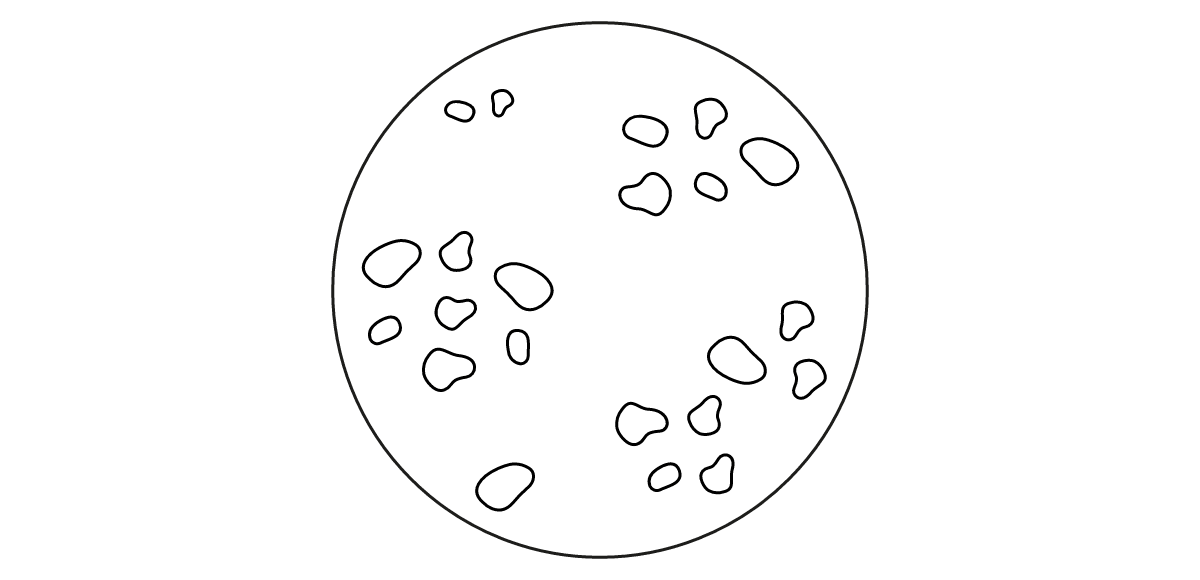Your guide to hyperpigmentation
Hyperpigmentation, uneven skin tone, whatever you may call it, is a big concern to many people. Let’s take a deeper look at hyperpigmentation.

Hyperpigmentation is one of those words that aren’t really in many people’s vocabulary. But for some people (most likely people like you, the good and curious ones who find themselves crawling the interwebs to learn more about skincare), it’s a pretty common word that you probably encounter on a regular basis.
And for those of you who’ve just entered this world of skin and fun: If you’re thinking “I have NO clue what hyperpigmentation is”, don’t worry, that’s what we’re gonna talk about now.
Soooo, we all know the feeling of *finally* getting rid of a breakout that’s been tormenting you for(ever) the past week. It’s a relief. There’s someone up there looking out for you. Or not. Because even though that sucker is gone, it made sure to leave a mark. A red mark, a dark spot, a scar. It comes in all shapes and sizes. And it’s called, guess what, hyperpigmentation.
And what is hyperpigmentation exactly?
Let’s start from the beginning (but at the end of the word): Pigmentation.
Pigment occurs naturally in the skin and it’s what forms and defines the many different skin tones of the world. And when pigment is overproduced, it leaves the skin with dark and red spots and an uneven skin tone.
So, when we talk about hyperpigmentation, simply put, we’re talking about an overproduction of melanin (oh, we forgot to explain what melanin is.. Melanin is a type of dark pigments that occur naturally in the skin). And then the overproduction leads to darker patches on the skin.
Still with us? Good stuff.
Now we know what it is. So what causes hyperpigmentation?
So, the skin overproduces melanin which leads to hyperpigmentation. So far, so good. But what causes this overproduction, you may wonder?
Hyperpigmentation can happen as a result of many things - aging (we get what’s known as liver spots), acne, sun exposure, injuries, pregnancy, some medication and genetics can play an important role when looking for the cause of hyperpigmentation.
So naturally, you may ask yourself the following questions:
“Can I fix it?” followed by “How can I fix it?” (and this is where things get interesting for skincare nerds like us 🤓)
There’s not a single yes or no answer to whether or not you can make your hyperpigmentation go away. It’s all up to the skin Gods and your overall skin type and situation.
However, there’s a list of ingredients proven to fade the appearance of dark and red spots. But we’ll get to that in a minute.
Because we wanna get one thing straight: Even though hyperpigmentation can be caused by a series of things that we can’t necessarily control, there’s one important thing that we can do to prevent hyperpigmentation. And that’s wearing sunscreen.
Sunscreen is your fun cream (it rhymes if you say it the right way).
Of course, you can’t prevent it if it has already happened, but you can keep it from happening again and again and again. So if your hyperpigmentation is due to sun exposure: Wear sunscreen. And just in general: Wear sunscreen.
If your hyperpigmentation is caused by acne (also referred to as post-inflammatory hyperpigmentation or PIH for short), there’s a variety of ingredients that’s been proven to help with evening out the skin tone.
Let’s take a look: Retinol You’re probably thinking “retinol this, retinol that”, because retinol is everywhere right now. But there’s a reason for that!
Retinol is a brilliant ingredient to add to your routine if your goal is to fade hyperpigmentation, because it boosts cell turnover (basically speeds up the process of shedding dead skin cells and replacing them with new ones). This will fade the hyperpigmentation and give you a more even skin tone overall.
In reality, there’s no superfast way to fade hyperpigmentation (sorryyyyyyy), however using the right skincare products can speed up the process. Like retinol (which is why you’ll be able to get a Face Cream with retinol recommended when you take our skin test - if our clever algorithms think you need it, that is).NiacinamideNiacinamide is one of those great multitasking ingredients which is why it’s been a true go-to ingredient for a lot of people seeking to fade hyperpigmentation.
And here’s why: Niacinamide helps lighten the skin tone and reduce dark spots and overall hyperpigmentation. So that’s pretty awesome. Lactic AcidExfoliation is a great way to try and speed up the cell renewal process. And this is where Lactic Acid makes its entrance. Lactic Acid is an AHA (Alpha Hydroxy Acid) which is generally used to address skin concerns like signs of premature aging (or just aging in general), fine lines and wrinkles, and (drum-roll, please) hyperpigmentation.
If you’ve generally found exfoliation to be too harsh on the skin, you should definitely try Lactic Acid, since it’s known to be extra gentle, making it good for those with sensitive skin (but you should still ease into it if you have genuine sensitive skin).
Let NØIE help you
Hyperpigmentation and general uneven skin tone is a super common skin concern. Which means that a lot of our NØIE users struggle, and have struggled, with it. And that’s (sort of) good news for you, because that means we’ve learned a lot about hyperpigmentation - directly from people dealing with it.
And do you know what that means? It means that we’ve been able to make some awesome formulations for people with hyperpigmentation and uneven skin tone as their primary (or even secondary) skin concern.
If hyperpigmentation is a skin concerns of yours, take (or re-take) our skin test and let us recommend you a skincare routine suitable for exactly your needs 😎